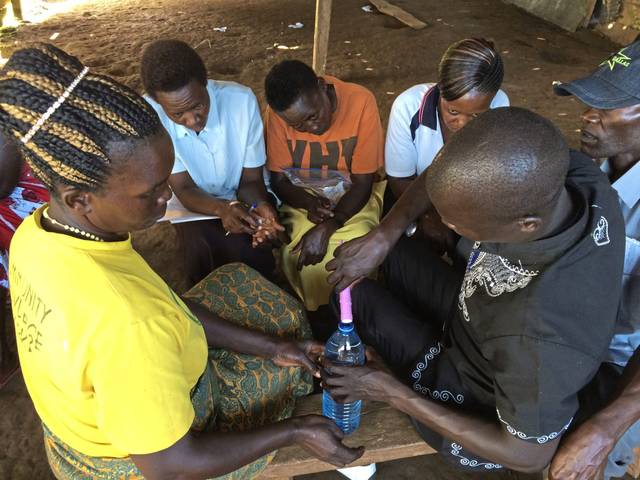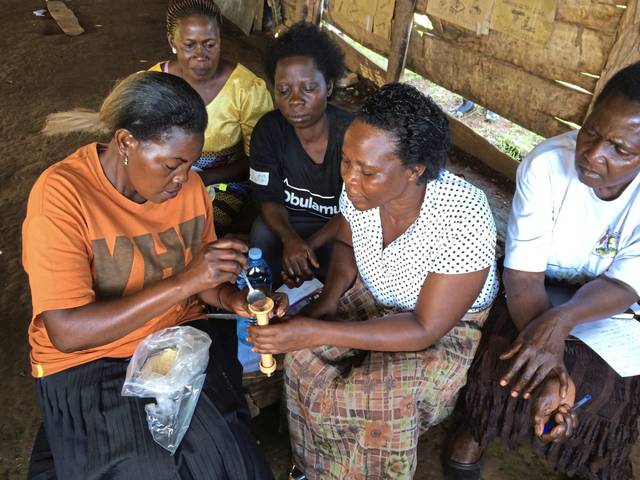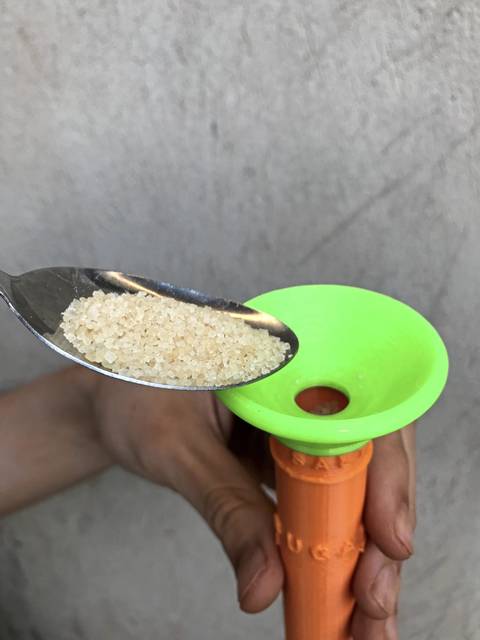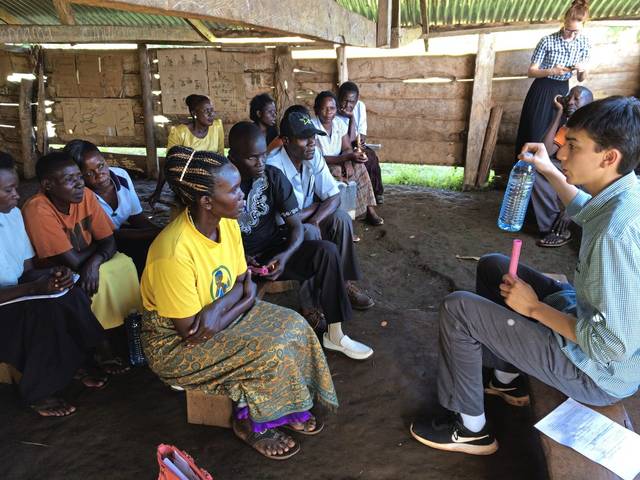Winchester Thurston grads test science project in Uganda to combat dehydration
Two college students from Pittsburgh want to use a 3D-printed tube to help save lives.
Their invention is meant to help combat diarrhea caused by disease that can leave children dangerously dehydrated.
Jack Waters and Jacob Dubner created their device, called the ORTube, as part of a science class at Winchester Thurston School in Shadyside. Now, their invention has received praise from a physician working in Uganda after they worked with him to test it and they are looking for funding to continue to test it and produce it.
“We believe it has the potential to do a lot, a lot, of good and save a lot of lives,” said Dubner, now a sophomore at the University of Pennsylvania.
Diarrheal disease is the second leading cause of death worldwide in children under five, according to the World Health Organization.
The tube has compartments that help create the correct mix of ingredients for a re-hydration drink, a common treatment for diarrheal disease.
“What you’re really trying to do is prevent dehydration, when your body is trying to empty itself of fluids,” said Waters, a sophomore at Brown University.
Currently, the two most common ways to make the drink is the household remedy of throwing a fistful of sugar and a pinch of salt into one liter of water or using pre-measured packets distributed by health centers in developing countries.
Problems can arise with both those methods. Hand sizes can vary, causing an imprecise mix. Finding the pre-measured packets means traveling to a health center, which might not be possible, and the health center might not have packets available, Dubner said.
“(Health centers) would run out within days then would be without for weeks after that,” he said.
Dr. Ed O’Neil, Jr., who has worked in Uganda for 11 years, called the re-hydration treatment one of the most impactful discoveries outside of vaccines and called Waters and Dubner’s ORTube invention “ingenious”.
“It’s a really smart and innovative tool, and the fact that two high school students came up with this, it’s just extraordinary,” said O’Neil. “This could be something that could take on a larger life.”
O’Neil founded the nonprofit Omni Med in Uganda, where Waters and Dubner went to test the invention last summer.
Waters and Dubner developed the ORTube in their Research Science class their senior year. A reading assignment in AP English Literature about cholera in India inspired the focus for their project.
The pair used CAD modeling and a 3D printer to design and build a tube that fits inside a 1.5-liter plastic water bottle. Instructions on the side explain how to properly fill the compartments for the right mix. The tube then adds the ingredients to the water in the bottle.
The ORTube allows for the same level of precision as the packets but can be used by people in their own homes, Dubner said. The pair’s goal is to make the treatment safe, effective and available without delay.
The device went through 17 major redesigns, but Waters and Dubner persisted. In 2017, the project won second place in the medicine, health and microbiology category at the Pittsburgh Regional Science & Engineering Fair.
“That was a surprise,” Waters said. “It was an exciting thing to have all that work we’d been doing appreciated. Jacob and I agreed there was no way we could just let this go to waste.”
But, after that, getting someone to listen to their idea was tough.
“For months, we contacted a huge number of charities and foundations, looking for help, and no one responded until we found Omni Med,” Waters said.
The organization allowed Waters and Dubner to spend three weeks last summer in Mukono District, about 12 miles outside the capital of Kampala. During a pilot study, 50 workers used the ORTube 175 times during a two-week period and were surveyed.
The testers unanimously responded that the device made it easier to prepare the re-hydration drink and that they would be more likely to use the solution as treatment if using the device. They said they would continue to use the ORTube if they had the chance.
“We got a ridiculously positive response,” Waters said.
O’Neil, who also works as a staff physician in the emergency room at St. Elizabeth’s Medical Center near Boston and as an associate professor at Tufts University School of Medicine, said he believed such success from the survey data warrants a larger scale formal study of the device.
“They had such an innovative idea that our staff really liked,” O’Neil said. “It certainly made sense and paid off.”
Now, the pair are pursuing grant funding to increase production and continue its testing.
“The work we’re doing really has a chance to make a real impact and I think that’s incentive to keep us going,” Dubner said.
Remove the ads from your TribLIVE reading experience but still support the journalists who create the content with TribLIVE Ad-Free.





